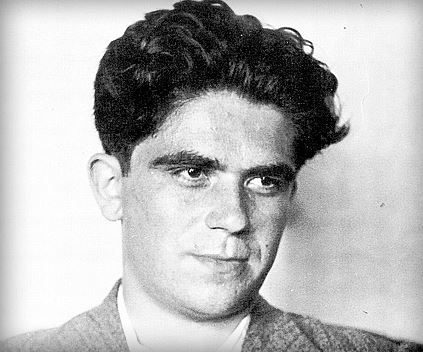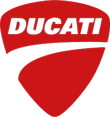Ducati- A Symbol of Freedom and Youth
Motorcycles have undergone radical changes since they were first discovered. They have grown from being something to get from Point A to B, to a symbol of freedom and youth. Several companies have aided this growth and prospered as a result of it. Whenever anyone mentions the word bike, chances are you think of Ducati. Having become synonymous with the words bike and motorcycle, this giant in the field exudes class and success. Here’s a look at how this small motorcycle company grew to become one of the world’s most recognized brands.
Gold-Standard Legacy
Ducati Motor Holding SpA produces several types of motorcycles and is a gold-standard within the industry for technical excellence. Since its early years, the company has made a name for itself in racing. Ducati has won over 13 World Superbike Championship titles between 1990 and 2006. Their motorcycles are valued collectors’ items and objects of fascination for fans around the world.
Similar to competitor Harley-Davidson, Ducati has entered the fashion industry designing motorcycling accessories. Ducati sells such apparel through its retail stores spread across the world. While the company has faced several ups and downs, theirs has never faltered, rather only increased. Here’s the story behind one of the biggest names in bike racing.
Setting Up Shop
Though Ducati associates itself with high-performance bikes now, its origins were in an altogether different industry. In 1926, Adriano Ducati and his sons, Adriano, Marcello, and Bruno Cavalieri founded Societe Radio Brevetti Ducati in Italy. Their early radio products were patents of Ducati and the company’s first product was a Manen’s condenser. This product followed by a string of successful products made them an international phenomenon.

In 1935, Ducati started the construction of their Borgo Panigale factory, and also began to expand. The Development of an international chain of facilities helped them serve their customers more efficiently. By the end of the 1930s, Ducati had offices in New York, Paris, London, and Sydney. However, WW2 ended their radio career with constant bomb raids destroying factories.
Also Read: Success Story of Xender, Sharing Files Without The Expense of Mobile Data
Moving into The Motor Industry
The destruction of their radio empire gave them the time and capital to focus on a completely different industry. Adriano Ducati and his brother thought of several new products to consolidate their international position. Eventually, the brothers decided to completely shift lanes and in 1946, Ducati came out with the Cucciolo. This small rotor fitted into bicycles, and soon enough, sales sky-rocketed. As the idea started to gain favor, Ducati began marketing it as a motorbike, using a Capellino frame patent.
The success of the Cucciolo led to further models and in 1952, the Cruiser came out. This bike came with an electronic ignition controlled 175cc engine, that had an automatic transmission. A year later, they released a smaller bike with a 98cc engine, as a way of attracting more customers. These two models together helped make Ducati an internationally renowned manufacturer. Under Fabio Taglioni, the company grew even further and by the late 1950s, the company was a strong market player.
Racing Pedigree
As Ducati bikes got stronger and more powerful, they became a staple in races. The 250cc GP models, like Mach 250 was taking part in and winning famous competitions all around the world. The 450 Mark 3D followed suit, with a top speed greater than 170 km per hour. As Japanese superbikes started pouring into the market, Western manufacturers had to reinvent themselves to stay relevant. To stay in the race, Ducati began making 750cc bikes in the 1970s. Their continued success led to Ducati being purchased by Claudio and Gianfranco Castiglioni in 1983.
Change of Guard
The Castiglioni’s, however, kept Ducati in the racing scene and even expanded to new models after improving the production volume. This golden period led to several important Grand Prix wins from 1986 to 1998. However, such aggressive expansion led to the company bleeding money, and soon Ducati faced financial issues. Sensing this, in 1996, the Texas Pacific Group bought 49% of the company for $43 million.
Two years later, TPG bought out the company, paying a whopping $174 million. The revived Ducati went on to win even more races and prices for their bikes sky-rocketed. This, in turn, raised the company’s revenues, with turnover hitting $280 million in 1998. A year later, the company was making $300 million annually. TPG then went on to go public with Ducati listing it on the New York Stock Exchange. Soon after, retail stores propped up all over the US and the company began selling apparel to great success.
This success has followed into the 21st century with Ducati still going strong. TPG sold its majority stake to the Italian firm Investindustrial Holdings in 2005. From 2006 onward, their sales increased and the company started bringing in more money than ever before. AUDI’s Lamborghini subsidiary then bought Ducati Motor Holding S.p.A. for €747 million in 2012. In 2018, they sold over 53,000 bikes, making them the leader in the superbike category with 26% market share. It goes without saying that this company will remain the gold-standard for motorbikes in the years to come.
Also Read: David Baszucki : Founder of Roblox, the Biggest Video Game Building Platform

Being a cinephile with a love for all things outdoorsy, Athulya never misses a chance to chase inspiring stories or poke fun at things, even when the subject is herself. Currently pursuing a degree in mechanical engineering, she is someone innately interested in technical and scientific research. Music reviews and op-eds define her as they allow her to explore different perspectives. Though sometimes she thinks she makes more sense playing the guitar than she does while writing.
